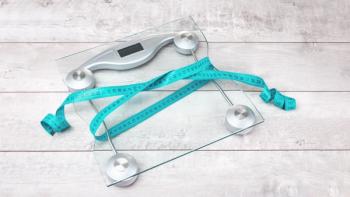
Reporting patient outcomes in clinical trials: Why moving to electronic PROs makes sense
Like so much in the world, patient-reported outcomes (PROs) in clinical trials are now recorded digitally, offering numerous benefits.
In clinical research, a patient-reported outcome (PRO) is any report of the status of a patient’s health condition that comes directly from the patient, without interpretation of the patient’s response by a clinician. Even in today’s day and age when researchers can use diagnostic tests to measure almost everything, PROs still play a major role in clinical research. PROs are especially used to track indications like fatigue, headache, depression, anxiety, pain, and sleep quality.1 And, like so much in the world, PROs are now recorded digitally, offering numerous benefits.
Paper Records
While PROs used to be recorded on paper, today’s digital tools make it possible to streamline this process. Traditionally, site staff provided subjects with paper diaries to record their PROs. While this approach may be cost-effective, not many are aware of its shortcomings. Below, I’ve outlined just a few of them:
- Lack of an audit trail: Paper-based recording makes it practically impossible for a study monitor to retrospectively determine when the subject actually provided the response.
- Skipping questions: In the case of lengthy questionnaires, there’s a high likelihood that subjects will miss answering a few questions, resulting in “lost data.”
- Data entry error: With paper-based diaries, site staff has to manually enter the values reported by the subject in a Case Report Form (CRF). This leaves room for human transcription errors—and, in turn, a higher number of monitoring findings, a delay in site closeouts, and, finally, a delayed clinical trial.
- Risk of unauthorized photocopies: Paper-based questionnaires run an inherent risk of being subjected to fraudulent entries. Sites can take photocopies of the empty scales and can enter fabricated entries in the new scales without any trail of these changes.
Going Digital
Problems like these can directly impact the quality and outcome of a clinical trial. It’s important to transition away from paper-based PROs and move to electronic PROs (ePROs). Here’s how ePROs outperform traditional paper-based PROs:
- Quality by design: The subject-management module in a CRF can ensure that the subject is provided access to complete information only pertaining to the appropriate visits and scales, eliminating the chance of erroneous reporting.
- No missing data: With ePROs, subjects cannot submit a scale unless all the questions are answered. This prevents the subject from inadvertently skipping any questions.
- Subjects’ safety and wellbeing: Electronic response submissions avoid an unnecessary site visit for the subject. This also provides an opportunity for the subject to submit the response from the comfort of home, eventually leading to a better recall value and accurate response.
- Full audit trail: Features like allowing only one response per subject, keeping track of when responses were submitted, and keeping a record of the original and revised data and the reason for any corrections all provide additional clarity for study monitors and auditors and result in superior-quality data.
- Speed as well as quality: Perhaps the best feature of an ePRO is that data entered by subjects is directly transcribed to an electronic CRF, thus eliminating the need for site staff to manually enter values—and thus preventing any data entry errors. All this adds up to faster monitoring, site closeout, and time to statistical analysis.
The Future
Electronic PROs are here to stay and, when done correctly, ensure faster and better clinical trials. Being eco-friendly, they also reduce the usage of total paper in clinical trials.
About the Author
Anil Yadav is head of quality assurance at Vedic Lifesciences Pvt. Ltd. (Mumbai, India), a contract research organization (CRO) serving the dietary supplement industry by performing clinical and toxicological work. Visit
Reference
- Deshpande PR et al. “
Patient-reported outcomes: A new era in clinical research .” Perspectives in Clinical Research, vol. 2, no. 4 (October-December 2011): 137-144
Newsletter
From ingredient science to consumer trends, get the intel you need to stay competitive in the nutrition space—subscribe now to Nutritional Outlook.





